
Global Support for Professionals
The following are the recommended settings for photographing landscapes:
| Photo shooting menu | |
|---|---|
| Focus mode | Single AF |
| AF-area mode | Single-point AF |
| Diffraction compensation | On |
| Vibration reduction | • Hand-held photography: Normal • Tripod photography: Off 1 |
| Silent photography | On |
| Custom Settings menu | |
| a7 AF activation | Shutter/AF-ON |
| a11 Low-light AF | On |
| d4 Exposure delay mode | 1 s 2 |
| Other settings | |
| Release mode | Single frame |
| Monitor mode | Monitor only |
1. Settings for lenses with on-board vibration reduction vary with the lens (see this section).
2. We recommend that, where available, an optional remote control be used in place of Exposure delay mode.
Choose Single AF (AF-S) for Focus mode and select Single-point AF for AF-area mode. This is the standard combination of settings for landscapes and other static subjects: focus will lock once you have chosen a focus point and pressed the shutter-release button halfway.
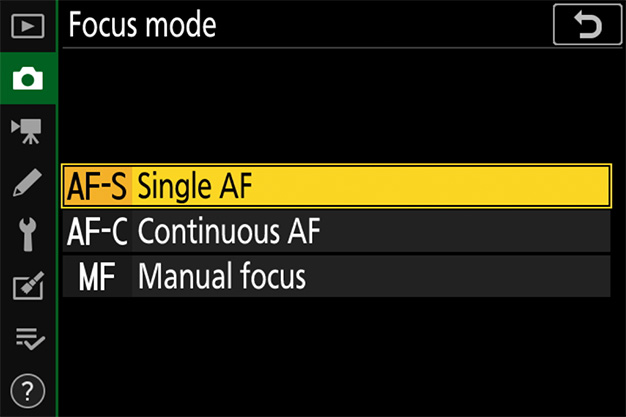
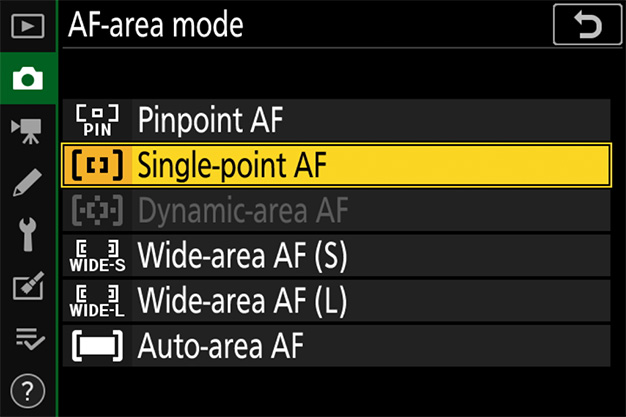
Choose a vibration reduction option according to whether the camera is mounted on a tripod. Normal, which offers a comparatively high level of vibration reduction, is recommended for hand-held shots of static subjects. Note that if you are using an F mount lens with a vibration reduction switch, the Vibration reduction item in the camera menus will be grayed out and unavailable, and vibration reduction options will instead have to be selected using the switch.
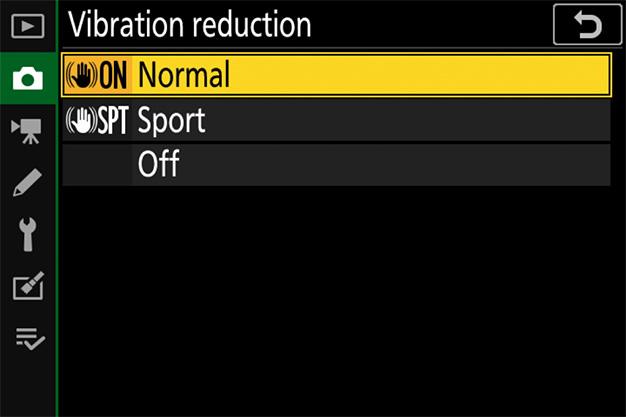
The recommended settings for tripod photography vary with the lens:
Choose Normal for lenses with on-board vibration reduction, Off for other lenses.
If you are using one of the lenses listed below, slide the lens vibration reduction switch to "NORMAL". Users of other lenses should consult the lens manual.
Choosing On for Silent photography in the photo shooting menu enables the electronic shutter, helping prevent blur caused by vibrations from the mechanical shutter.

Select Off for Silent photography:
In these cases, we recommend that you select Auto for Custom Setting d5 (Shutter type). The camera will automatically switch between the front-curtain and electronic front-curtain shutters according to shutter speed, helping prevent blur caused by camera motion.
When photographing sunsets, night scenes, and other dimly-lit subjects with AF-S selected for focus mode, choose On for Custom Setting a11 (Low-light AF) to help the camera focus.
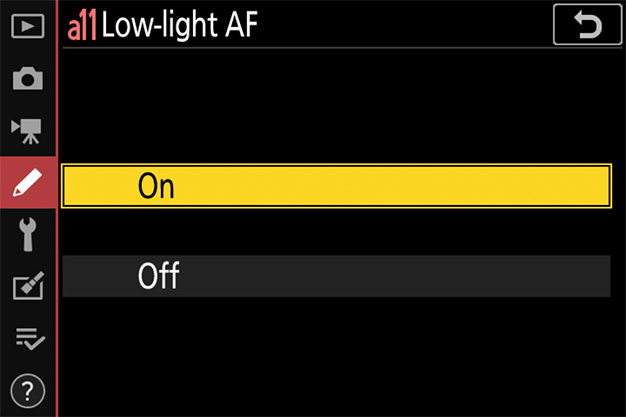
Custom Setting d4 (Exposure delay mode) is used to delay release of the shutter for a set time after the shutter-release button is pressed. A delay of a second or more helps reduce blur caused by the camera moving when you press the shutter-release button. appears in the display when an option other than Off is selected.
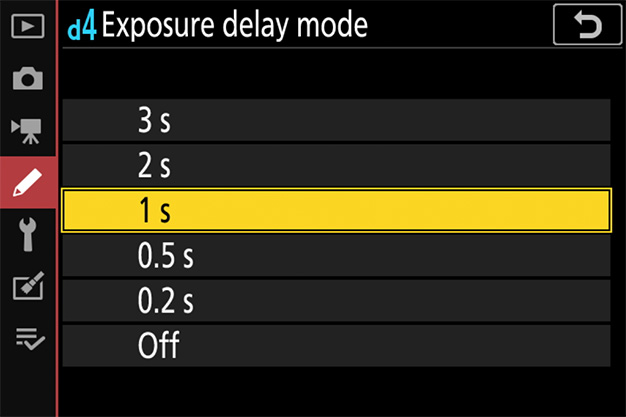
To prevent the monitor turning off should you accidentally trigger the eye sensor with your face or hands while composing photographs, use the monitor mode button to select "monitor only" mode.

When "prioritize viewfinder" is selected for monitor mode, the camera behaves much like a traditional digital SLR: in photo mode, putting your eye to the viewfinder turns it on and displays the view through the lens, but the shooting display does not appear in the monitor when you take your eye away. Menus and pictures can still be displayed in the monitor using the MENU and buttons. "Prioritize viewfinder" mode is recommended for current or former users of digital SLR cameras who prefer to frame hand-held shots in the viewfinder.